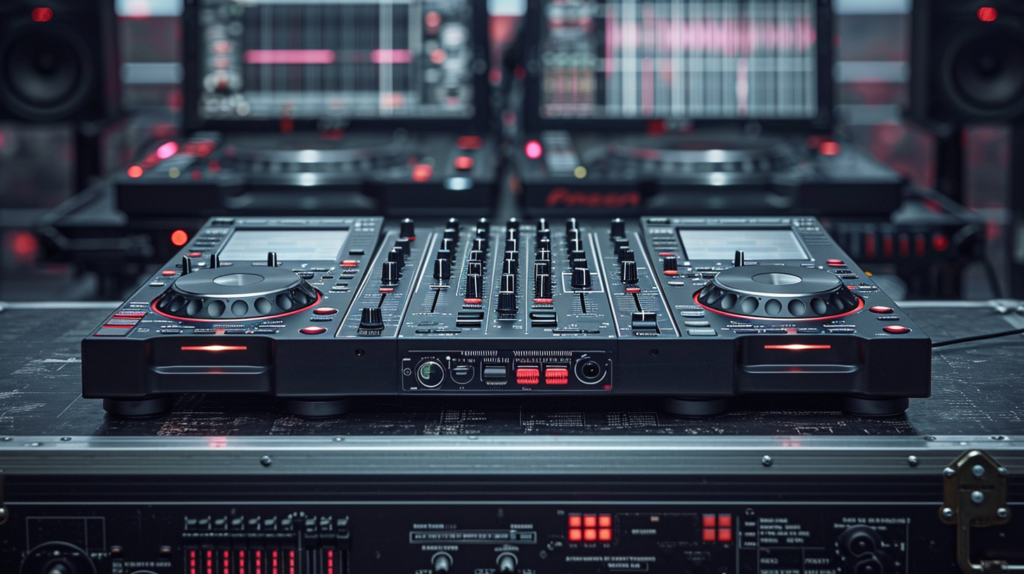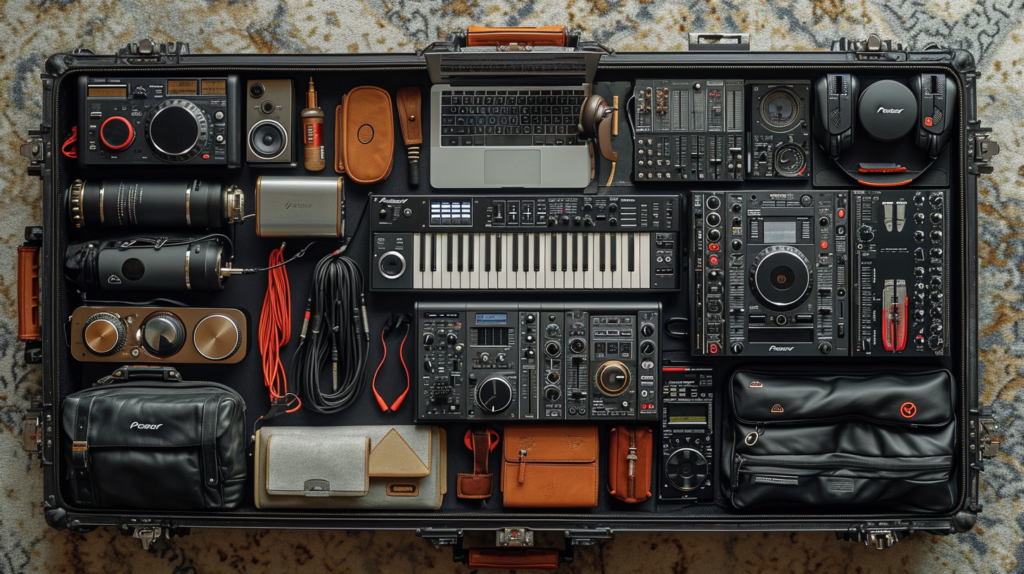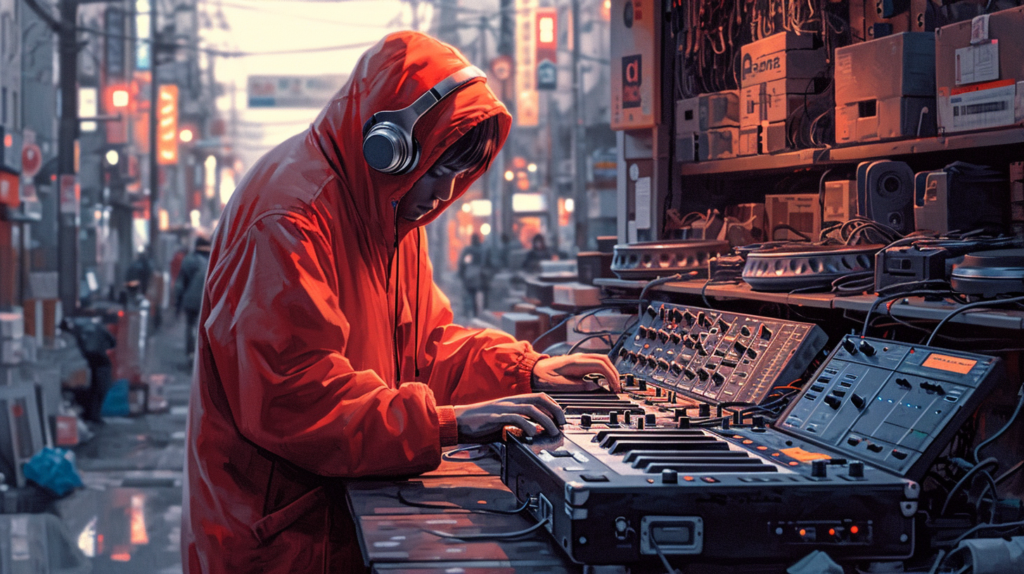Ever wondered if you can bring your slick DJ controller inside the cabin or checked luggage without ruining your gear?
Getting DJ controllers onto planes can be tricky but is definitely possible with savvy preparation and packing.
Let’s dive into the key steps for safely transporting your performance equipment by air.
Can You Bring a DJ Controller on a Plane?

Yes, you typically can bring a DJ controller on a commercial passenger flight as either a carry-on or checked bag. The key factors are making sure it adheres to the specific airline’s size and weight restrictions. You also need to pack the gear properly with protective padding in a hard-shell case. We’ll explore the details more below, but with smart preparation DJ controllers can fly safely to your next event.
Checking the Dimensions and Weight

When preparing to bring your DJ controller on a plane, the very first thing you need to research is the size and weight restrictions for carry-on luggage versus checked baggage. These restrictions can vary from airline to airline. Make sure you check with your specific carrier. In most cases, any bag measuring over 45 linear inches will need to be checked. The controllers themselves tend to fall under these limits, but once packed inside a case or bag, the total dimensions can end up exceeding what is allowed in the cabin.
The weight limitations are also crucial to keep in mind. Carry-ons generally have to stay under 40 pounds, while checked bags have a higher threshold around 50 pounds. Again this can differ among airlines. If traveling internationally, know that the weight rules may be more rigid especially for carry-on items.
With these size and weight restrictions in mind, carefully measure your DJ controller and case. Make sure it follows the policies for carry-ons if you wish to store it in the cabin with you during the flight. This helps prevent damage or loss from checked baggage handling. If your gear plus the packing case exceeds the limits, be prepared to check it plane-side.
Packing Your Gear Properly

The proper packing of your DJ gear is key to keeping it protected during air travel. First, choose a hard-shell case designed specifically for transporting musical equipment and electronics. Brands like SKB produce flight cases meeting Airline Transportation Association specifications. The sturdy outer shell prevents crushing or impacts. The interior is customizable with padding and tight compartments that hold gear firmly in place.
Carefully pack your controller, laptop, cables, headphones and any other accessories needed for your performance. Make sure they all have their own padded sections preventing hard parts from knocking together. Things like jog wheels on turntables are vulnerable to side impacts. Use additional foam inserts anywhere pieces may still have room to shift and bang against each other or the walls of the case. Secure everything tightly, close the latches, and test if you can shake or tip the case without hearing internal rattling noises.
It’s also wise to detach any cables like power cords or audio connectors and pack them separately from the gear itself. This saves space and reduces clutter and knotting that could damage ports during transit. Put these less fragile accessories either in a second carry case or in checked luggage if available.
At the Airport Screening Area

When you arrive at airport security with your DJ controller, be prepared for some extra scrutiny. The unusual electronic configuration with mixing boards, wires, and equipment that security staff are less familiar with often warrants an additional look. In most cases, you will need to remove your controller from your carry-on entirely so it can be analyzed separately.
The equipment may need to undergo a trace detection test to rule out any explosive residue on the hardware. A quick swab collects particles that are chemically analyzed for dangerous substances. This is harmless for your gear but does cause slight delays at checkpoints. Very rarely, agents may also need to open your protective case to visually inspect or test components. Have backup cables and accessories in case anything is misplaced while your gear is being handled.
Overall though, if properly packed there should be minimal disruption getting a controller through security. Be cooperative with all requests from agents, while also ensuring careful repacking of your fragile equipment before heading on down to your gate.
On the Plane

When boarding the aircraft with your DJ carry case, first check that the overhead bins have enough space and dimensions to accommodate it. Most regional jets have smaller overhead storage that even carry-on-sized bags struggle to fit into. There is often room to store cases lengthwise in larger plane cabins. When lifting the bag, keep it upright without tipping for optimal safety.
Secure your controller case firmly inside the compartment. Push it all the way to the back and ensure it is not hanging halfway out the bin door. This prevents it from falling down and sustaining damage. Try to store it wheels down rather than up so it sits flat. You may need to place your backpack or personal item underneath. Removing any detachable cables can make your gear case narrower and less bulky if space is tight with other passengers’ belongings.
If the flight attendants determine your DJ controller cannot fit inside the overhead bins safely due to its size, you will need to gate check it before boarding the plane. This means handing it over to be put with regular large luggage in the aircraft’s hold below. They will return it to you upon landing after general baggage claim.
For extra precaution against loss or damage, always remove headphones, laptops, cables, hard drives or any smaller accessories that will fit inside a carry on bag and bring those onboard. Store them under the seat in front of you so you have the critical elements needed to DJ in case of delays in getting your checked equipment returned.
Arriving at Your Destination

As you prepare to claim your DJ gear at your destination, having backups of small but essential components in your carry-on provides assurance in case issues arise. Bags can get lost or stuck on misrouted planes, taking days to track down with airline staff and get returned. Items placed in baggage holds also sustain more impacts and jostling versus carry-on luggage directly by your side which risks damage. In addition to headphones and cables to enable basic DJing functions, pack spare needles, fuses, memory cards or anything else compact that may be hard to replace in that city if your accessories go missing for any length of time.
When collecting your checked DJ case or retrieving your carry-on controller, thoroughly inspect it before leaving the airport. Test all functions and hardware to check for problems. Closely examine moving parts like platters and faders for new scratches marring surfaces. Try out ports and buttons to confirm correct operation, and replace any spent batteries powering remote controls or displays. Immediately report any significant defects to the airline and file claims if relevant. It is much easier getting compensation for reimbursements on-site versus days later offsite.
Perform these tests again once at your hotel or venue before the performance. Air travel can sometimes loosen cables that later wiggle free. Let your equipment fully acclimate to the ambient temperatures and humidity levels before plugging it in also to prevent condensation issues. And allow extra setup time accounting for any troubleshooting of problems only discovered when attempting use at the gig after transport.
Better to identify issues in advance before guests arrive and the show starts rather than scrambling trying to problem-solve technical difficulties while live and in front of an impatient crowd expecting nonstop music. Planning ahead saves stress and enhances the performance experience for both the DJ and partiers counting on functioning equipment keeping energized music playing.
Shipping Your Gear as an Alternative

Given all the risks and intricacies getting DJ controllers successfully through airports, many working music artists choose to ship their delicate gear instead. Airlines subject baggage to a lot of abuse through the automatic shunting of conveyor belts, clanging against other luggage, exposure to weather, and the stacking of heavy items on top of one another without regard for fragile contents. Numerous bag handlers also fail to be gentle. This transportation process applies stresses equipment was not designed to repeatedly endure.
Checking detailed weather forecasts in advance helps avoid subjecting your hardware to adverse environmental conditions during ramp transfers or when equipment gets left out on the tarmac. Allowing extra days for gear to arrive also permits flexible accommodation of any shipping delays. Tracking numbers enable actively monitoring of the package in transit for peace of mind knowing its exact location along the delivery route. You receive notifications when the shipment reaches intermediate checkpoints and ultimately your venue, so you can immediately retrieve and inspect it upon final arrival.
The costs associated with professional shipping via recognized carriers could still prove cheaper than excessive checked bag fees charged by some discount airlines. It also reduces risks of damage resulting in expensive repairs or fully replacing very specialized equipment. Complications with airline baggage liability limits may even negate any potential compensation for damaged goods long before replacing a thorough DJ gear setup. Overall evaluating both financial expenses alongside practical pros and cons can determine if transporting your controllers personally or sending them ahead makes the best sense for your DJing purposes and peace of mind.
Conclusion
In conclusion, transporting DJ controllers by air involves careful consideration of airline policies, smart protective packing, and taking precautions in case of delays or damage. Checking size limits, detaching cables, cushioning gear, and carrying backups while also contemplating professional shipping allows DJs to maximize both safety and performance functionality.
